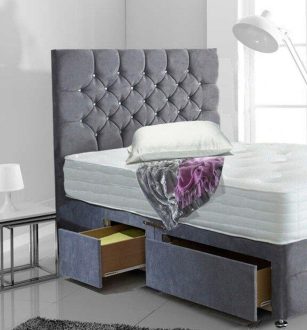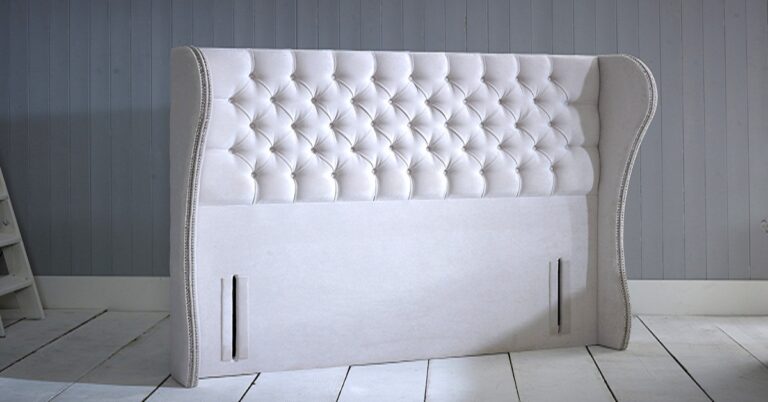How To Improve Lifespan of Headboard
A headboard is a focal point in your bedroom, adding style and personality to your sleeping space. To ensure that your headboard stands the test of time and retains its aesthetic appeal, it’s essential to take proper care and maintenance measures. In this comprehensive guide, we’ll explore practical strategies to improve lifespan of headboard while keeping it in pristine condition. Follow these tips to preserve the beauty and functionality of your cherished headboard.
Choose High-Quality Materials and Construction
The foundation for a long-lasting headboard lies in selecting durable and high-quality materials and construction techniques. Opt for solid wood or metal headboards rather than particleboard or flimsy materials prone to damage. Inspect the joints and connections to ensure they are sturdy and well-built. A well-constructed headboard will withstand regular use and maintain its structural integrity for years.
Protect Against Moisture and Sunlight
Moisture and sunlight are common enemies of furniture, and headboards are no exception. Excessive exposure to sunlight can lead to fading, discolouration, and warping of the wood or fabric. It’s advisable to position your bed away from direct sunlight and use window coverings, such as curtains or blinds, to shield your headboard from harmful UV rays. Additionally, avoid placing your headboard near windows or in areas prone to high humidity, as moisture can cause swelling, mould growth, and other damage.
Regular Cleaning and Dusting
To maintain the longevity of your headboard, establish a routine cleaning schedule. Dust and dirt can accumulate on the surface, leading to scratches and a dull appearance. Use a soft cloth or a feather duster to remove dust particles gently. For tougher stains or marks, dampen a clean cloth with mild soapy water (avoiding excessive moisture) and carefully wipe the affected areas. Always follow the manufacturer’s instructions and first test any cleaning solution on a small, inconspicuous area.
Avoid Sharp Objects and Rough Handling
It’s essential to handle your headboard with care to prevent accidental damage. Avoid leaning or placing sharp objects against the headboard, as they can scratch or dent the surface. If you have children or pets, teach them to be mindful of the headboard and discourage activities that may cause unnecessary wear and tear. Practicing gentle handling will help maintain the headboard’s pristine condition and extend its lifespan.
Use Proper Bedding and Pillows
The headboard often comes into contact with pillows, cushions, and bedding materials. Use pillowcases, shams, and mattress protectors to protect your headboard from stains, spills, and oil residue. Regularly launder your bedding to prevent dirt buildup, and consider rotating your pillows periodically to distribute weight evenly. By taking these simple precautions, you can preserve the cleanliness and longevity of your headboard.
Maintain a Consistent Environment
Fluctuations in temperature and humidity can adversely affect the lifespan of your headboard. Avoid placing your headboard in areas exposed to extreme temperature changes, such as near heating vents or air conditioning units. Maintain a stable indoor environment using a humidifier or dehumidifier, depending on your climate, to prevent excessive dryness or moisture. By providing a consistent environment, you’ll minimize the risk of warping, cracking, or other forms of damage.
Browse bedrush Headboard Collection
Avoid Excessive Weight or Pressure
Headboards are designed to support the weight of the bed and the individuals using it. However, excessive weight or pressure can lead to structural damage over time. Avoid sitting or standing on the headboard, as this can cause it to weaken or even break. Consider alternative solutions, such as bed frames with built-in storage compartments, if you need additional support or storage. By avoiding excessive weight or pressure, you’ll ensure the longevity of your headboard.
Store Properly During Moves or Renovations
If you plan to move or undergo renovations in your home, it’s essential to store your headboard correctly to prevent damage. Disassemble the headboard, following the manufacturer’s instructions, and pack each component securely. Use appropriate padding and covers to protect the headboard from scratches, impacts, and dust. Store the headboard in a dry, climate-controlled area to avoid extreme temperatures or humidity exposure.
Conclusion
by following these essential tips, you can significantly improve the lifespan of your headboard and keep it looking its best for years to come. Choose high-quality materials, protect against moisture and sunlight, regularly clean and dust, handle with care, use proper bedding, maintain a consistent environment, perform regular inspections, protect from pets and children, avoid excessive weight or pressure, and store appropriately during moves or renovations. By implementing these strategies, your headboard will remain a stylish and functional centerpiece in your bedroom for the long haul.
Learn About Headboard Assembling Tips
Frequently Asked Questions (FAQs)
-
Can I use any cleaning product on my headboard?
It’s essential to refer to the manufacturer’s guidelines for cleaning instructions learn properly how to improve lifespan of headboard. While many headboards can be cleaned with mild soapy water, some materials may require specific cleaning products or techniques. Always test any cleaning solution on a small, inconspicuous area before applying it to the entire headboard.
-
How often should I inspect my headboard for damage?
Inspecting your headboard every few months for signs of wear, loose screws, or damage is recommended. Additionally, if you notice any sudden changes in the appearance or functionality of the headboard, it’s advisable to inspect it immediately.
-
Can I repair a damaged headboard myself?
Minor repairs, such as tightening screws or using touch-up paint, can often be done by yourself. However, it’s best to consult a professional furniture restorer or carpenter for more significant damage or complex repairs to ensure the best possible outcome.









